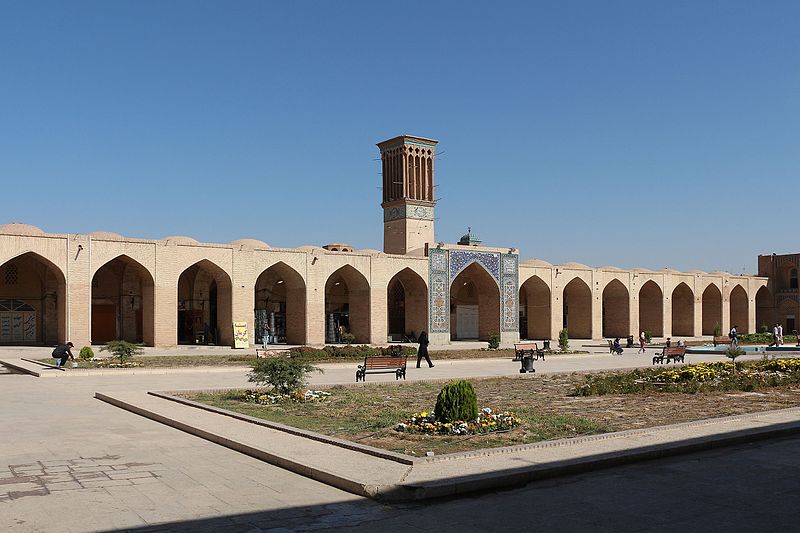Ganjali Khan was one of the famous rulers during the reign of Shah Abbas of Safavid. As the ruler of Kerman province he constructed many monuments and buildings, displaying a modern architectural style of the time. Ganjali Khan complex is composed of a school, a square, a caravansary, a public bath, a water reservoir, a mint house, a mosque and a bazaar. A number of inscriptions laid inside the complex indicate the exact date when these places have been built. The architect of the complex was Mohammad Soltani from Yazd. iran tour
The Ganjali Khan Bath in the complex is situated on the southern side of the rectangular complex. This is a unique work of architecture with beautiful tile works, paintings, stuccos, and arches. The entrance of this bath has been artistically painted with ornaments of the Safavid era. The most interesting feature of its architectural finish is that the sculptured stones of the ceiling coincides with that of the flooring.
An exquisite blend of art and architecture, this building has a staggered entrance which opens into six spacious apses.
Upon entering the Bath, a dim, narrow, curving aisle leads visitor to an octagonal vestibule, itself linked to the cloakroom by a similar aisle. It has six separate changing rooms for the various social classes: the sayyeds, clergy, khans, wealthy merchants, and the common people. Currently in each one of these sections, two statues portray this scene. From the changing rooms one enters the bath proper, an area of 46 by 30 meters. Narrow passages lead to a row of halls, each of which had a specific use such as massages and hot and cold baths. The main bath comprises of a cold water pool with a ceiling similar to that of a tent supported by eight beautiful pillars.
The bath rendered service no later than 60 years ago. The ceiling of the bath was originally covered with fine marble that admitted light from the outside. Later marble was replaced by glass. Sunlight pours in from the roof overhead, creating superb light effects. Water from an underground qanat, which the Khan himself twice excavated, flowed out in the city square and fed the city cistern. Although the cistern was built in the time of Ganjali Khan, it is known by the name of his son Ali Morad Khan, whose name is in the inscription. The cistern is 19.5 by 10 x 9 meters can hold some two million liters of water.
The Ganjali Khan Bath currently serves as an anthropology museum and attracts an increasing number of Iranian and foreign tourists. In the closet section and main yard of the bath there are many life-like statues which demonstrate how a bathhouse functioned, bringing back the memory of everyday scenes from its past.. These statues were designed at Tehran University’s faculty of fine arts in 1973 and then transferred to this museum. All garments and exhibited objects are period pieces: razors, phials for rose perfumes and long-stemmed pipes to be enjoyed after the bath.
Lacking a proper sewage system, wells have been dug in Kerman to discharge waste.iran tour Most of these wells are now brimming with filth, menacing the area of historical buildings, mostly made of adobe and mud-brick. Floating on this sea of sewage, Kerman’s historical fabric is threatened by crawling damp, which has already damaged the Ganjali Khan Bath and grand Bazaar.
Ganjali Khan Complex
December 15, 2021
0 comment

Comment (0)